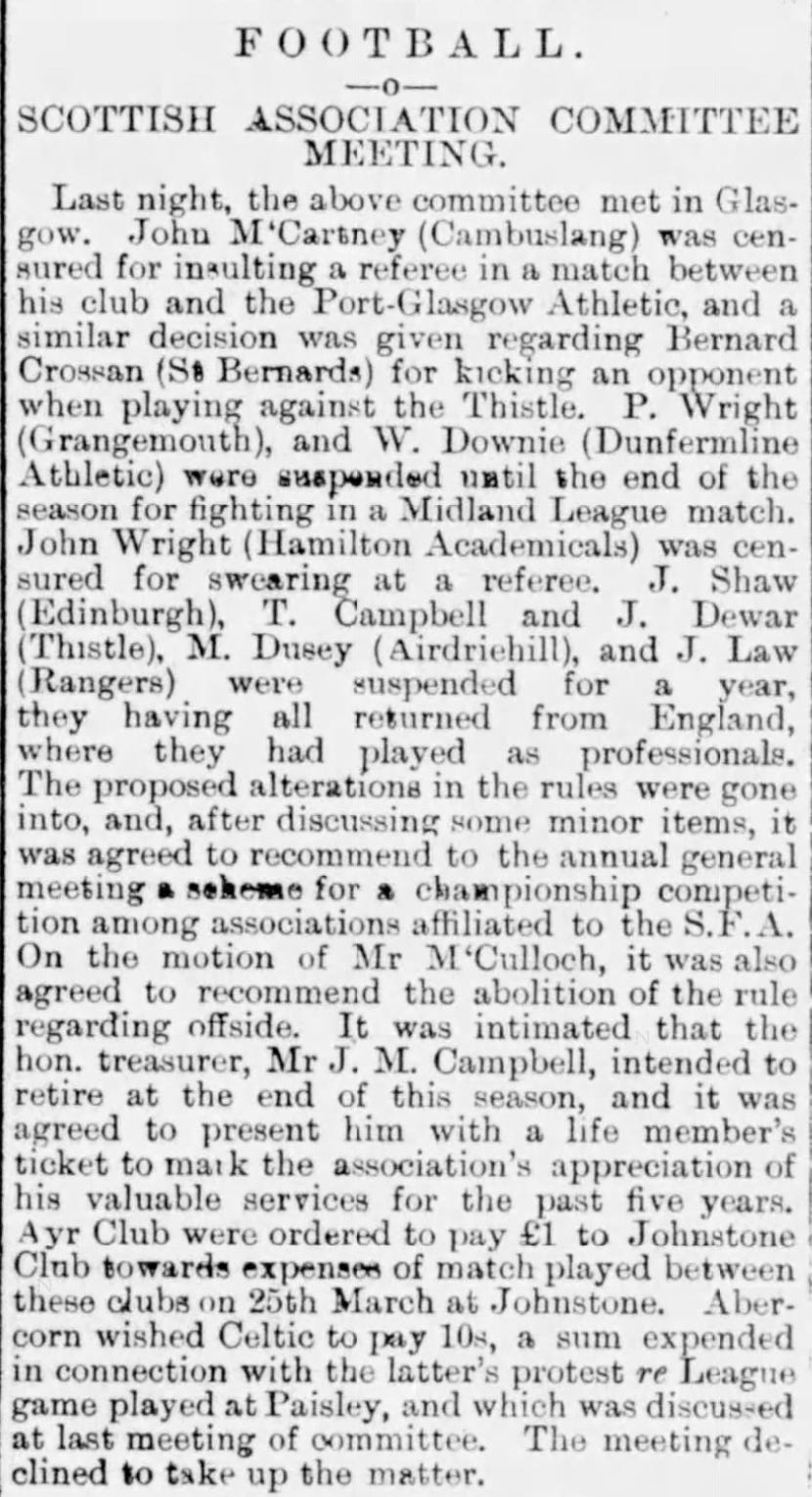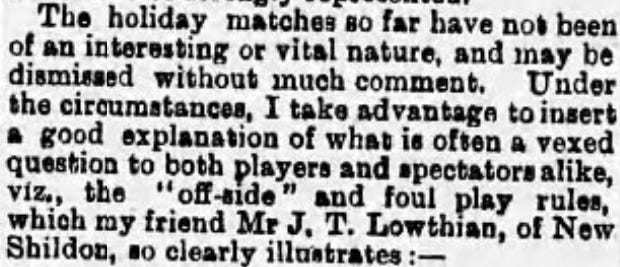An Early Attempt To Abolish Offside
Wikipedia will tell you that the Scottish FA urged the international football community to change from the three player offside rule to a two player rule as early as 1893:
However, if you dig into the newspapers, you’ll discover that the proposal was a bit more extreme than that.
I should note first that Wikipedia cites a newspaper called Scottish Referee which I don’t currently have access to. However, I was able to find references to the same movement in numerous other contemporary newspapers.
It seems that the push to abolish came from a man named McCulloch:
Naturally, this caused a bit of commentary:
The newspaper attributes this push to an international match between Scotland and England played in front of 20,000 spectators at Athletic Ground in Richmond on April 1, 1893. Clegg was the name of the referee from the English Football Association. England won, 5-2, coming from behind to overturn a late 2-1 deficit. Interestingly enough, though, I’ve been unable to find any references to any controversial offside decisions against Scotland, despite reading two different contemporary reports of the match.
Anyway, the commentary continued in the Scottish press:
I’ve got to agree with this brief editorial. Removing the offside rule completely would turn football into a sport of dumping the ball inside, one that would be dominated by tall and strong players - a sport that would lose a lot of its finesse. I think it would be similar to what basketball looked like in the days before three pointers and the shot clock.
The proposal was indeed taken seriously:
I believe this is where the idea of a two man offside rule originated. It strikes me as a compromise between the status quo and the insanity of removing the rule altogether.
Now, if you’re interested, here is a contemporary description of what the offside rule was like in 1893:
Basically, the rule was that the player could only be marked offside if there were not three defenders (including the goalkeeper) between him and the goal when the ball was kicked. That’s always been the sticking point, of course. It’s not when the ball arrives, but, rather, when the ball was kicked, making it very difficult to spot accurately.
As a side note, it’s also interesting to see the final sentence refer specifically to playing “in any manner likely to cause injury.” I’ve got a feeling that the grand old game might have been a tad violent back in those days.










